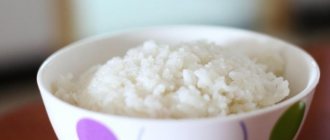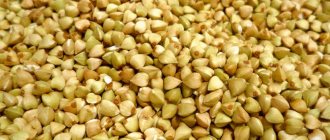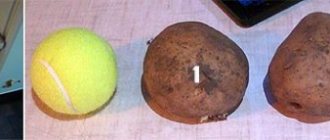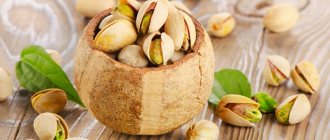Dried apricots are a famous dried fruit that is often found on the shelves of shops and supermarkets. It contains many useful components, vitamins, minerals that are required for the normal functioning of internal organs. It is obtained by drying apricots using a special technology, during which it loses its natural color. It becomes not as bright as fresh fruit. But still, this does not in any way affect the beneficial properties of dried fruit. If you decide to include it in your diet, then you should first study the BJU and calorie content of dried apricots per 100 grams. This will help make the menu correct and balanced.
Calorie content per 100 grams in 1 piece
Dried apricots contain high levels of potassium. For this reason, it is often prescribed for use in diseases of the heart and blood vessels.
In addition, the dried fruit contains many vitamins, minerals, and beneficial components that are required for the normal functioning of the body. The dried fruit contains iron. It is required for reduced hemoglobin and protects against anemia.
The table below shows the content of BJU per 100 grams.
| Squirrels | 5 grams | 7% of daily value |
| Fats | 1 gram | 1% of daily value |
| Carbohydrates | 52 grams | 18% of the daily value |
How many calories are in dried apricots per 100 grams? The average nutritional value is 210–220 kcal. Dried fruit contains a lot of carbohydrates, so it is often used for snacking; it saturates with energy and satisfies the feeling of hunger for a long time.
Video
Many people are often interested in how many calories are in 1 piece of dried apricots. But to answer this question, you should first find out the weight of one dried fruit; on average it is 5–10 grams. It follows from this that the nutritional value of the berry can be in the range of 10–15 kcal.
Pros and cons of dried fruit, benefits for the body
Unlike other dried fruits, dried apricots contain a huge amount of potassium. Therefore, it is recommended for cardiovascular diseases. Also in the composition you can find a complex of vitamins, minerals and other components that the human body needs.
Another component of dried apricot is iron, which helps with anemia and replenishes the lack of hemoglobin.
The ratio of proteins, fats and carbohydrates (BJU) in 100 g of dried apricots, calorie content of dried fruit:
| Index | Quantity | Share of daily value |
| Squirrels | 5 grams | 7 % |
| Fats | 1 gram | 1 % |
| Carbohydrates | 52 grams | 18 % |
| Calorie content | 215 kcal | – |
Knowing how many calories are in dried apricots per 100 grams is necessary in order to understand when it is best to consume them. 100 g contains approximately 215 kilocalories. Since the product is rich in carbohydrates, it is best used as a snack. Dried fruit can charge the body with energy and quickly suppress the feeling of hunger.
Video
Calorie content of one dried fruit
1 medium-sized dried fruit weighs approximately 5–10 g, so the calorie content will be from 10 to 20 kilocalories for one fruit.
When losing weight
The calorie content of dried dried apricots without seeds is quite high, so when losing weight it is recommended to strictly dose the amount of dried fruit consumed. You shouldn’t completely give up fruits either, since dried fruits have a rich vitamin and mineral complex that provides support for the body’s immunity.
Practical advice: It can be used as an alternative to sweets, tea and sugar desserts. It is recommended to include no more than 5-6 dry fruits daily in the menu of a person losing weight.
Compote of dried apricots
If you cook compote from dried apricots, then its calorie content without added sugar per 100 g will be 25 kilocalories. In order to brew such a drink, you need to prepare 150–200 g of dried apricots and 1 liter of water.
Cooking recipe:
- initially rinse dried fruits in water to clean them from possible dirt and dust that could accumulate on the fruits during storage;
- pour the dried fruits with cold water in a saucepan and place it on the stove;
- Once the liquid boils, reduce heat and simmer for 10 minutes.
When the compote is ready, you can cool it in the refrigerator for 5 hours so that it can brew properly.
Important! If necessary, you can add citric acid or sugar to the drink, and also cook it with the addition of other dried fruits, such as raisins, dried apples, and prunes.
Dried apricots in chocolate
Dried apricots covered in chocolate are a sweet that both adults and children love. 100 g of dried fruits in chocolate contains the following ratio of BJU:
| Index | Quantity | Share of daily value |
| Squirrels | 3.5 grams | 5 % |
| Fats | 13 grams | 17 % |
| Carbohydrates | 54 grams | 19 % |
The recipe for such a delicacy is worth taking note of for those people who simply cannot exclude sweets from their diet. This healthy, tasty and satisfying dessert will replace regular chocolate.
Video
But the calorie content of such sweetness increases significantly; 100 g contains 360 kcal, which is approximately 18% of the daily requirement. Therefore, people on diets should avoid this delicacy.
The benefits of dried apricots
Healthy dried fruits have many advantages:
- give a diuretic effect, therefore they are recommended for diseases of the urinary system;
- remove harmful substances from the body, protect it from their accumulation;
- rich in iodine, therefore dried fruits are indicated for thyroid diseases;
- recommended for use at high blood pressure;
- have a positive effect on visual acuity, stabilize and improve it;
- has a strengthening effect on blood vessels and the circulatory system.
Note! Daily consumption of dried fruit increases the body's defenses, strengthens the immune system, and protects a person from diseases.
Much more benefits for the body will come from eating dried apricots along with prunes. Moreover, the nutritional value of the second dried fruit is approximately the same as that of dried apricots.
Video
Harm
Dried apricots cause harm to the body only if they are included in the diet of a person with contraindications to its intake.
Therefore, you should not include dried fruit in your diet for people:
- with thyroid diseases;
- with diseases of the gastrointestinal tract, including ulcers, gastritis;
- in case of individual intolerance to the product or its components. It can manifest itself in the form of allergies, itching, rashes and redness.
In other cases, eating dried apricots, taking into account the BJU, is possible and necessary.
Video
Features of use during weight loss
Dried apricots are high-calorie foods, so their consumption during weight loss should be limited. But you shouldn’t completely remove it from the menu; it contains many vitamins, useful components, and minerals that are necessary to strengthen the immune system and maintain the body’s microflora.
Dried apricot can be used as a substitute for sweets. It can be an excellent addition to tea; it can be consumed instead of sweets, sugar, and cakes.
It is worth noting! When losing weight, you can eat up to 5-6 berries per day. If dried fruit is consumed in unlimited quantities, this may negatively affect the figure.
How to eat dried apricots for weight loss
Losing weight with dried apricots is quite simple, since the fruits are very filling, and after eating just a few pieces, you can satisfy your hunger.
How to lose weight with dried apricots?
- Replace desserts and snacks with dried apricots to reduce cravings for sweets.
- Spend 1 fasting day per week on this product. For this you will need approximately 10-15 fruits.
- Meals can also be replaced with compote or dried fruit puree.
Recipe for delicious dried apricot compote
The average energy value of compote without sugar is about 25 grams per 100 grams.
Video
To prepare 1 liter of compote, you will need the following components:
- dried apricots - a glass of 200 grams;
- water – 1 liter.
Preparing compote is quite simple, it consists of the following steps:
- The first step is to rinse the dry fruits with cool water. During storage in warehouses, they can become dirty and covered with dust.
- Next, the washed fruits should be placed in a container and filled with water.
- The pan needs to be put on fire.
- After the mixture boils, it should be left on low heat for 10 minutes.
The finished compote should cool to a warm state. Then it should be put in the refrigerator for 5–7 hours, it should brew. If you like a sweeter compote, then you can add a little sugar to it, but if you prefer sour drinks, then you can add a few drops of lemon juice. To prepare compote, you can use other dried fruits - prunes, dried apples, raisins.
Video
For women
Dried apricots are a storehouse of vitamins, valuable acids, and minerals. It must be present in the diet of women planning pregnancy. And during pregnancy, the product is extremely necessary. It prevents anemia and constipation, maintains a woman’s health, and provides nutrients. However, dried apricots will also benefit non-pregnant women. When regularly included in food, they strengthen the immune system, provide a balance of vitamins, and help maintain healthy and youthful skin. The only limitation is excess weight. Due to the high sugar content, women on a diet should limit themselves to two or three pieces per day. For comparison: a healthy person who is not obese can eat up to 100 g.
In Apple pie order
Dried apricots in chocolate filling are an ideal dessert that can be included both in the everyday menu and served on a holiday table. Children especially like this delicacy.
The table below shows the content of BJU in 100 grams of dried apricots in chocolate:
| Squirrels | 3.5 grams | 5% of daily value |
| Fats | 13 grams | 17% of daily value |
| Carbohydrates | 54 grams | 19% of daily value |
Dessert can be consumed by people who cannot completely give up sweets. It is considered a good substitute for regular chocolate. Dried apricot in chocolate has a high calorie content. 100 grams contain almost 360 kcal, which is 18% of the daily value. People who are on diets should completely exclude this dessert from their diet.
Composition of the product
The average composition of dried apricot is as follows (per 100 g of product):
- water – 17 g;
- proteins – 4.9 g;
- fats – 0.3 g;
- carbohydrates – 49 g;
- mono- and disaccharides – 53.7 g;
- fiber –2.9 g;
- organic acids – 3.1 g;
- ash – 3.9 g;
- potassium – 2038 mg;
- calcium – 109 mg;
- magnesium – 89 mg;
- phosphorus – 201 mg;
- iron – 2988 mcg;
- vitamins – 2.54 mg.
Beneficial features
Dried apricots are considered a healthy dried fruit, which contains a high level of vitamins and minerals.
In addition, dried apricot has a number of positive properties:
- Has a strong diuretic effect. For this reason, it is recommended to use it for diseases of the urinary system.
- Cleanses the body of harmful substances, but also protects it from their reappearance.
- The composition contains a high level of iodine, so it is worth using for thyroid problems.
- It is recommended to include in the diet for high blood pressure.
- Has a positive effect on the eyes. Normalizes vision and increases its sharpness.
- Strengthens the structure of blood vessels, improves blood circulation.
Dried apricots should be included in the menu every day, but in small quantities. Thanks to this, the immune system increases and the body's resistance to various diseases improves.
Video
Calorie table
We are all accustomed to thinking that dried apricots are dried apricots, and this is true, but this is just one type of dried fruit. There are three ways to dry apricots - dried apricots, kaisa and apricots, each of which has its own calorie content.
| View | Kcal | B | AND | U |
| Dried apricots | 220 | 1,7 | 0,6 | 52,4 |
| Dried apricots | 213 | 4,0 | 0,5 | 50,6 |
| Kaisa | 243 | 4,0 | 0,1 | 63,5 |
Harm
Do not forget that eating dried apricots may not always be beneficial for the body.
Dried fruit has some contraindications for which it should not be included in the diet:
- Problems with the digestive organs - stomach ulcers, gastritis.
- Increased sensitivity.
- It is worth giving up dried apricots when the first symptoms of an allergy appear - rashes, redness, itching. In this case, you should contact an allergist.
The history of the appearance of dried apricots in nutrition
The ancient Chinese called this dried fruit the fruit of wisdom.
Because of its appearance after drying. Dried apricots were a valuable product because they could be eaten in cold times and when there were no refrigerators. Sailors took dried apricots with them on long voyages. During their long wanderings, they needed all kinds of micro- and macroelements. Dried apricots were eaten to maintain immunity and to fight various diseases.
In eastern countries, the tradition of giving dried apricots and other dried fruits to newlyweds is still preserved. Dried apricots symbolize prosperity and wealth.
Calorie content
Dried apricots are considered a high-calorie product. For this reason, when losing weight, you should use it with extreme caution.
It should not be completely excluded, because dried fruit contains many useful components that are required for the normal functioning of the body.
The table shows the ratio of proteins, fats and carbohydrates per 100 grams:
| Squirrels | 5 grams | 7% of daily value |
| Fats | 1 gram | 1% of daily value |
| Carbohydrates | 52 grams | 18% of the daily value |
The calorie content of dried dried apricots without seeds in 100 grams is 215 kcal. The weight of one berry is 5–10 grams. The BJU calculation should be performed based on this weight. On average, one piece contains 10–15 kcal.
Features of choice
To buy a truly healthy product containing a maximum of vitamins, you should adhere to the following recommendations:
- An unnaturally bright color should alert you. It indicates treatment with drugs that improve the keeping quality of the crop.
- Choose medium-sized dried fruits. Many scientific articles note that they are rich in vitamins, macro- and microelements.
- Avoid buying fruits with shiny skin. An unnatural shine indicates that the seller lubricated them with vegetable oil.
- Do not buy dried apricots with a winey, sour or cloying smell. It is spoiled or treated with drugs that extend its shelf life.
Benefits for weight loss
As mentioned above, dried apricots have a high calorie content, so when losing weight they should be consumed carefully. But you shouldn’t completely exclude it either, otherwise you can get the opposite result.
Video
But still the benefits for weight loss are quite large:
- Dried fruit can act as a substitute for sweets. It helps to give up pastries, sweets, cakes, and desserts.
- It has a beneficial effect on the state of the intestinal microflora; when consuming apricot, constipation goes away and the heaviness of the abdomen disappears. Speeds up metabolism, this is what is considered the most important component in losing weight.
- Has a strong diuretic effect. Due to this, all harmful substances and toxins leave the body naturally.
- The composition contains an increased level of carbohydrates. Thanks to this, dried fruit charges you with energy and strength, and increases brain activity.
Eating dried apricots when losing weight will help avoid mood swings, which often occur during severe hunger. But still, you shouldn’t get too carried away with dried fruit, because it has high nutritional value. If you plan your diet correctly, then 2-3 pieces of dried apricot will definitely not cause harm; on the contrary, they will be able to satisfy the feeling of hunger, fill you with nutrients and improve your health.
A storehouse of vitamins
Although the variety of vitamins in dried apricots is relatively small, it is still sufficient for the normal functioning of the body.
- Vitamin A takes part in restoration processes.
- Vitamin B1 brings energy to the body.
- Vitamin B2 acts as an activator of the body's metabolic processes.
- Vitamin C promotes the cell repair process.
- Vitamin E acts as an antioxidant.
- Vitamin PP normalizes cholesterol levels.
Due to its composition, the product has a positive effect on the entire human body:
- improves heart function;
- normalizes the functioning of the pancreas;
- activates the immune system;
- speeds up metabolism and vision;
- normalizes cellular respiration;
- prevents the development of cancer.
But despite all the benefits of these dried fruits, their consumption has its contraindications. The product is prohibited or strictly limited for the following problems:
- diseases of the digestive system;
- endocrine system disorders;
- allergic reactions to food;
- Pregnant and lactating women should limit their consumption.
Questions and answers
How to choose
To ensure that weight loss does not have a negative impact on health, dried apricots for the diet should be selected with special care. What to look for when choosing:
- it should not be too bright, unnatural shade;
- high-quality fruits are grayish or dark brown in color;
- a too regular, rounded shape is another alarm bell: the natural one will be wrinkled and uneven;
- it should be soft - this indicates a new, fresh harvest;
- the fewer food additives (so-called e-sheks) indicated on the packaging, the better;
- E220 should definitely be abandoned;
- fruits are whole, without damage or mold;
- the smell is pleasant, fresh, and not musty and sour.
Dried apricots should not be too bright or unnatural in color.
If you want to get maximum benefits for your health and weight loss, try to purchase a high-quality, natural product.
How to store
After purchasing, you need to take care of how to protect the product from premature deterioration.
What?
Linen bags allow moisture to pass through. Plastic containers interrupt the taste and smell, giving the product its own synthetic-chemical appearance. Plastic bags quickly grow mold. Metal boxes emit oxides and shorten shelf life. So it is not recommended to keep dried apricots in all of the containers listed.
But you can pour it into a glass jar with an airtight lid, cardboard or wooden boxes (but their shelf life is limited to one month), or a tightly closed ceramic container. For freezing, it is recommended to use food foil.
Where?
Where there is no direct sunlight and heat. A refrigerator or dark corner of a closet will do just fine.
How many?
If on the shelf - no more than a month. In a dark and cool corner - six months. In the refrigerator - up to 10 months. In the freezer - up to one and a half years.
Helpful advice. If you notice that the dried apricots have become much softer than they were at first, dry them in the oven (50 minutes at 75°C) to prevent the formation of mold.
How much can you eat
The maximum daily intake in the absence of other products in the diet (during a fasting day or when following a mono-diet on dried apricots) is no more than 300 g, divided into smaller portions.
If there are other products on the menu, you can eat no more than 100 g per day.
When losing weight at night, it is better not to eat dried apricots due to their high calorie content. Still, the basis of its nutritional value is carbohydrates, albeit complex ones. Before going to bed, they may simply not have time to be fully digested and go to the beneficial needs of the body. In this case, they will replenish fat reserves on problem parts of the body.
How to dry apricots yourself?
If you can’t find good dried apricots on sale, try drying apricots at home. Only ripe, juicy, fleshy fruits, preferably large in size, are suitable for drying. Wash them under running water, dry them, cut them in half and remove the seeds.
There are three ways to dry apricots:
- In an electric dryer. Temperature – 55 degrees, time – 40 hours.
- In the oven. Temperature – 65–70 degrees, time – 12 hours.
- In the sun. First, leave the apricots in a dark, well-ventilated area for 1 day. Then move it to the sun and leave it for a week.
The latter drying option allows you to preserve maximum vitamins in the fruits. However, such dried apricots acquire a dark color.
Dried apricots are an excellent alternative to ripe fruits, a storehouse of vitamins, minerals and fiber. They are easy to take with you to work and on the road. Dried apricots quickly satisfy hunger, replacing snacks in the form of candies, cookies and chips. However, the store-bought product can be harmful to health due to the sulfur dioxide content. Therefore, dried fruits should be washed thoroughly, and it is better to prepare them yourself.
Storing dried apricots
Dried apricots should be placed in glass or plastic containers. Store in a dark, well-ventilated place for no more than 12 months. Optimal conditions:
- temperature 10–20 degrees;
- humidity 15–25%.
Dried apricots can also be frozen. It is better to put it in plastic containers rather than plastic bags. Frozen dry apricots can be stored for up to 18 months. After defrosting, it is great for making compotes.











